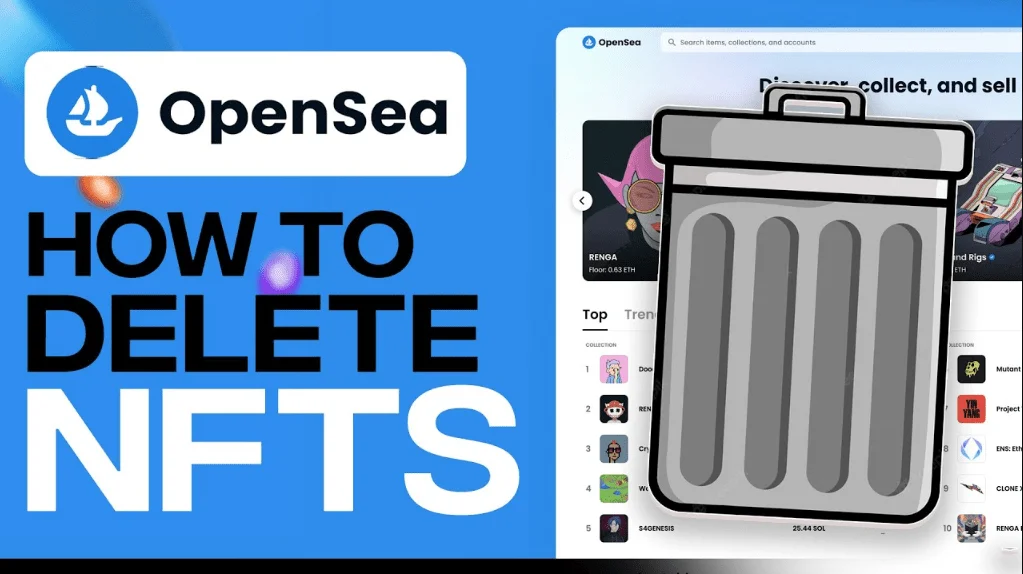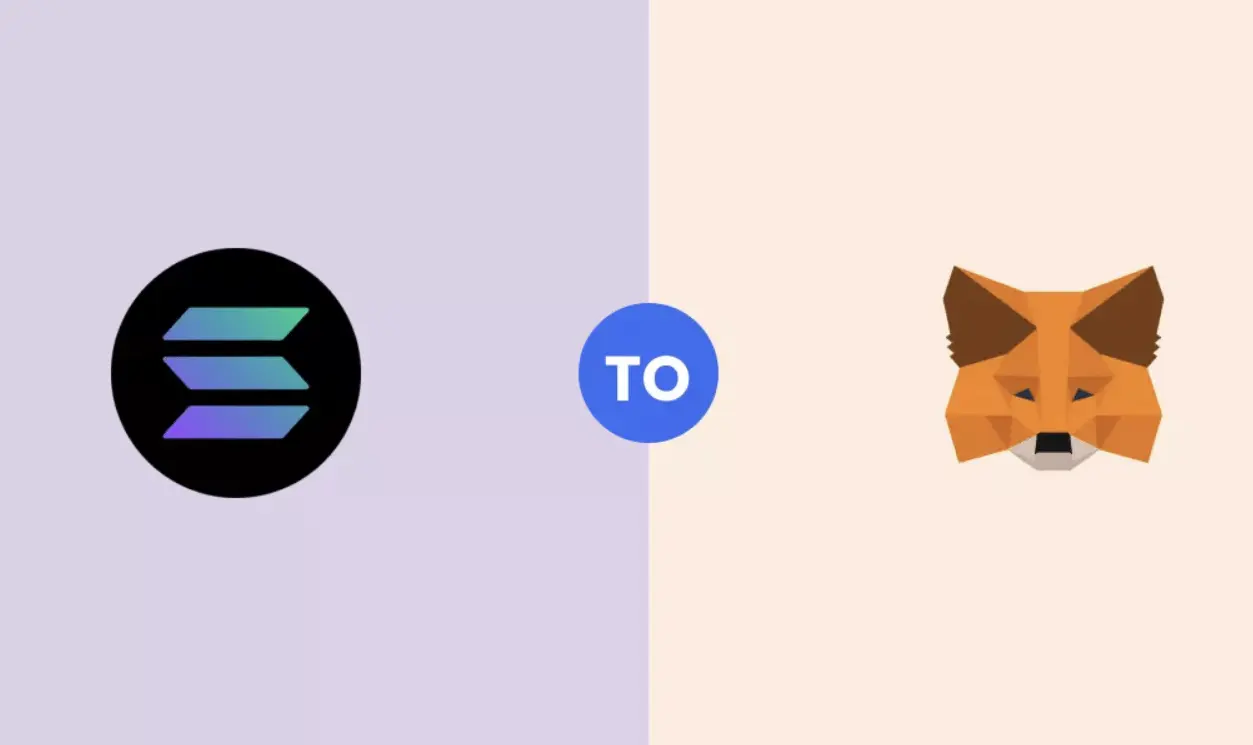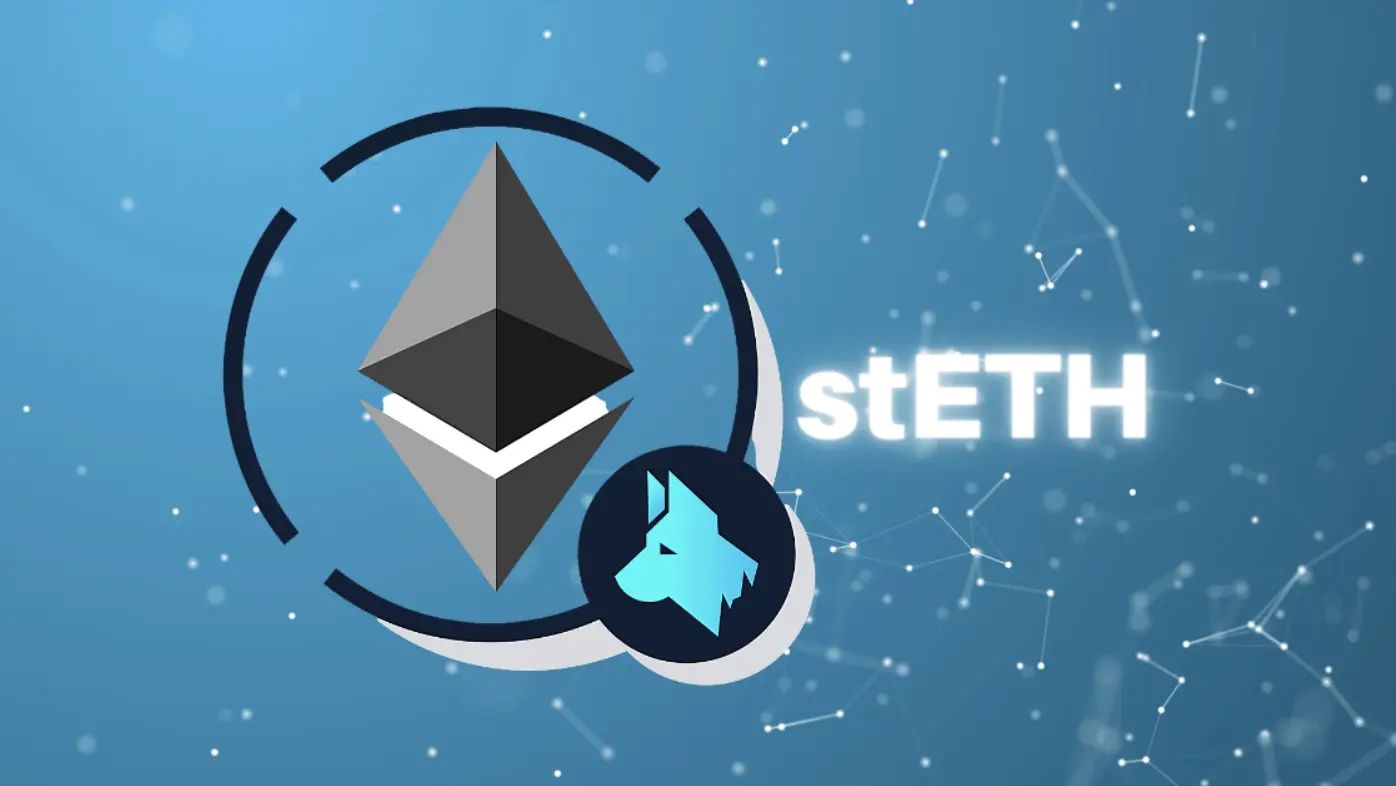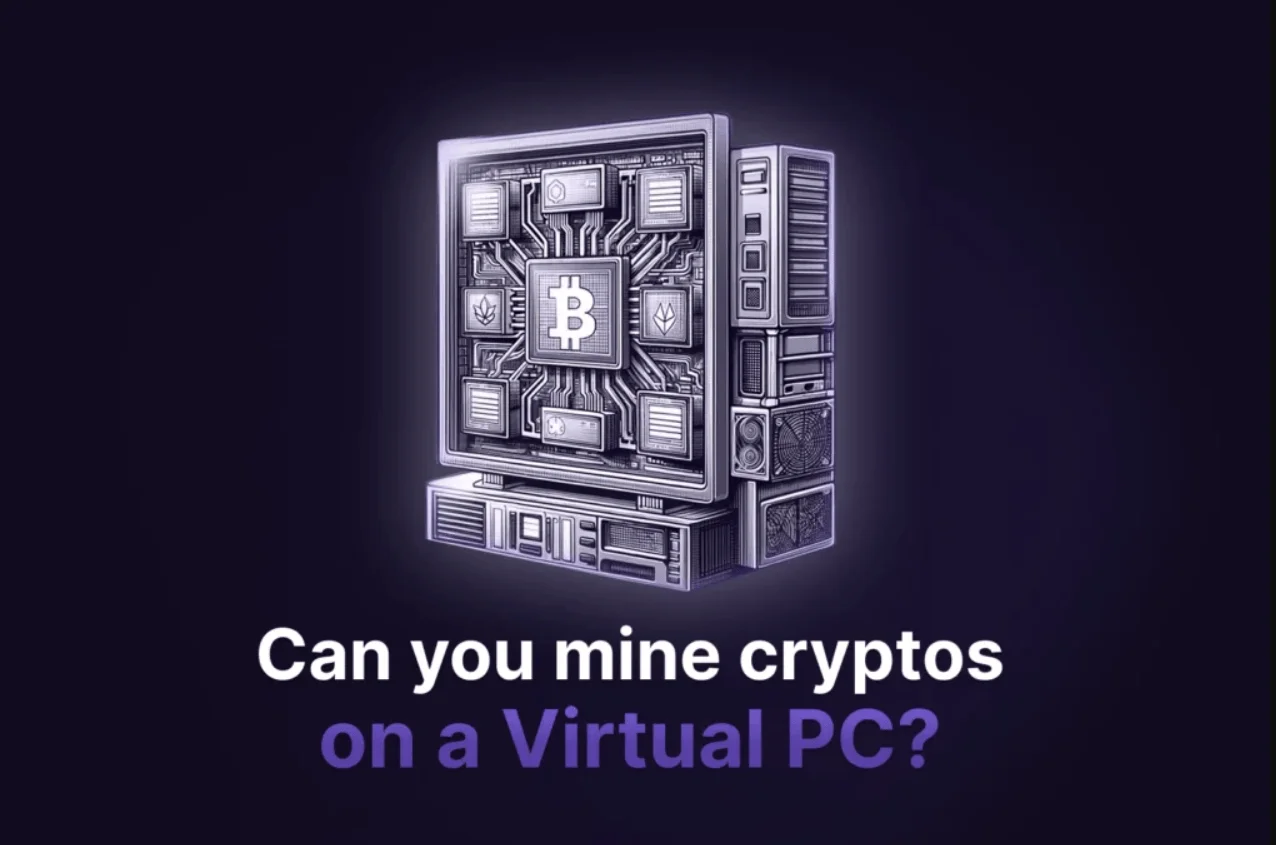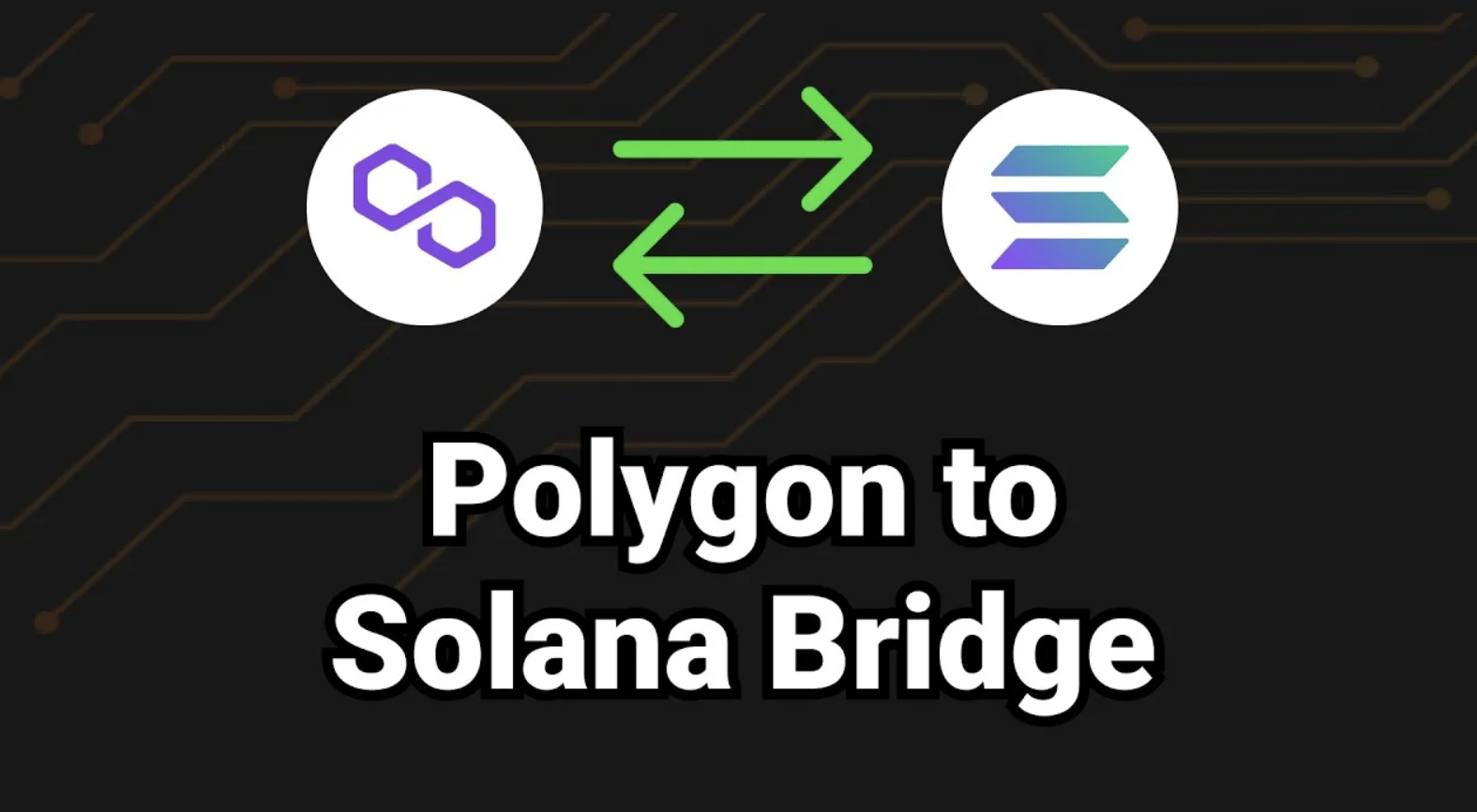TL;DR: How to Delete NFT from Wallet
- Deleting NFTs: Unlike regular files, NFTs can’t be simply deleted; they must be burned or hidden, affecting their visibility or existence in your wallet.
- Hiding NFTs: Major platforms like OpenSea allow users to hide unwanted NFTs from their public profile, though this does not remove them from the blockchain.
- Burning NFTs: Permanently removes NFTs by transferring them to a zero address or burner wallet, effectively taking them out of circulation.
- Impact on Value and Security: Burning increases scarcity and potentially value, while hiding affects portfolio aesthetics. Always ensure transaction security to protect your assets.
- Future Developments: Tools and methods for NFT management, including deletion and hiding, will continue to evolve with the blockchain technology landscape.
Table of Contents
Delete NFT from wallet: What You Need to Know
When you dive into the world of NFTs, knowing how to manage your digital assets is key. This includes understanding how to delete or remove NFTs you no longer want.
Let’s explore what this process entails and how it differs from deleting regular digital files.
The Nature of NFTs and Blockchain Technology
NFTs, or non-fungible tokens, are unique digital assets stored on a blockchain. They prove ownership of digital items like art, music, or collectibles.
Unlike other digital files, each NFT has a unique identifier that makes it one of a kind. When you transfer an NFT, you’re changing the record of ownership on the blockchain.
This technology makes NFTs secure, but also immutable. Once something is on the blockchain, it can’t simply be “deleted” in the traditional sense.
Why “Deleting” NFTs is Different from Regular Files
Deleting regular files from your desktop or smartphone is straightforward. You select the file, hit delete, and it’s gone. With NFTs, it’s not that simple. Because they exist on the blockchain, you cannot just remove them with a click. Instead, if you want to get rid of an NFT, you must “burn” it.
Burning an NFT means sending it to a zero address or a burner wallet—a place where no one can access it. This action removes the NFT from circulation, making it impossible for anyone else to trade or use it. However, the record that the NFT existed remains on the blockchain.
This process ensures the asset is securely and permanently dealt with, aligning with the immutable nature of blockchain technology.
Recommended For You: What is an NFT Airdrop? Your Easy Guide to Free Digital Treasures
Practical Steps to Remove or Hide NFTs from Wallet
If you’ve decided some NFTs in your portfolio no longer serve your interests, you have practical ways to manage them.
This could mean hiding NFTs you don’t want to see or permanently removing them from your wallet. Let’s break down how to effectively do both on various platforms.
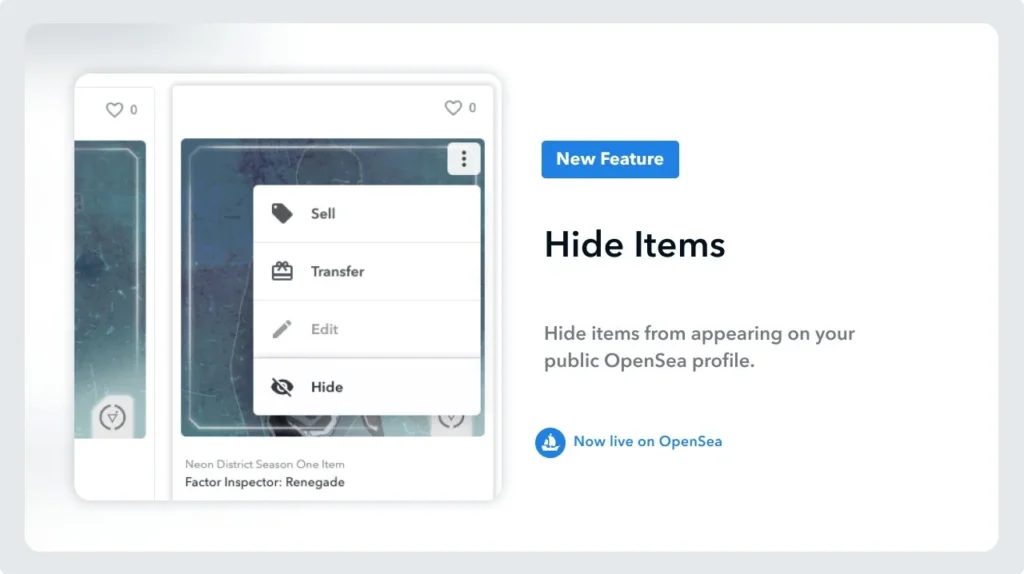
Hiding NFTs on Major Platforms
Many NFT marketplaces like OpenSea offer the option to hide NFTs from your public profile. This can be useful for NFTs you don’t want to display, including spam NFTs. To hide an NFT on OpenSea:
- Navigate to the NFT you want to hide. Use the marketplace’s interface to find the specific asset.
- Click on the three dots (more options) in the top right corner of the NFT’s page. This will open a menu of actions you can take.
- Select ‘Hide’. This moves the NFT to a hidden tab in your profile, removing it from public view.
Remember, hiding an NFT doesn’t delete it from your wallet; it simply removes it from public display on the platform.
Burning NFTs: A Permanent Solution

Burning an NFT is the most definitive action to remove an NFT from circulation permanently. This process involves sending the NFT to a wallet address that nobody can access, effectively removing it from the marketplace and your wallet.
Here’s how to burn an NFT:
- Connect your wallet to the platform where the NFT is held. This could be MetaMask, Solflare, or another crypto wallet.
- Navigate to the NFT you want to burn. Find the asset within the platform’s interface.
- Follow the platform’s process for transferring an NFT. This might include clicking on ‘Transfer’, ‘Send’, or another similar option.
- Enter a known burn address as the recipient. For Ethereum, this might be
0x000000000000000000000000000000000000dEaD. - Confirm the transaction. You’ll likely need to approve the transaction in your wallet app, possibly incurring a gas fee.
Burning an NFT is irreversible, so be certain before you proceed. Once burned, the NFT is removed from circulation and cannot be recovered.
Additional Considerations When Managing NFTs
As the NFT landscape continues to evolve, managing your digital assets wisely is more crucial than ever.
Beyond simply deleting or hiding your NFTs, consider the broader implications of these actions on value, security, and the future of NFT management.
The Impact of Burning or Hiding on NFT Value and Scarcity
When you choose to burn an NFT, you’re not just removing it from your collection; you’re altering its overall scarcity. By permanently removing an NFT from circulation, you potentially increase the rarity—and possibly the value—of the remaining pieces within the same collection.
On the other hand, hiding an NFT, especially if it’s a spam NFT or one you don’t wish to display, doesn’t affect its scarcity but can help maintain the aesthetic and perceived value of your public collection. Both actions have strategic uses depending on your goals as a collector or creator.
NFT Security: Ensuring Safe Transactions
Security is paramount in the world of cryptocurrency and NFTs. Always follow secure practices when transferring, burning, or managing NFTs.
Use trusted platforms and double-check wallet addresses before confirming transactions. Beware of phishing scams and ensure your private keys and wallet credentials are secure.
Employing these practices helps protect your assets from hackers and malicious parties, ensuring that your NFTs remain under your control.
Future of NFT Management and Deletion
As the NFT market matures, we can anticipate advancements in the ease and flexibility of NFT management. Future developments may include more nuanced control over NFT visibility and easier, more secure methods for burning or transferring assets.
Adoption of new blockchain technologies may also introduce innovative ways to manage digital scarcity and ownership. Staying informed and adaptable will be key to navigating these changes effectively.
By considering the value, security, and future of NFT management, you can make informed decisions that align with your objectives in the ever-evolving digital asset space.
Wrapping Up: Mastering NFT Management
To delete an NFT or manage your digital collection effectively, understanding the unique nature of blockchain technology is crucial. Whether you choose to hide your NFTs from view or permanently remove them from circulation by burning, each action has specific implications for your portfolio’s value and security.
Always follow secure steps, consult the help center for guidance, and use trusted platforms for any transactions. As the digital landscape evolves, so will the tools and methods for NFT management, ensuring you can maintain control over your digital assets in a safe and smart way.
Remember, managing NFTs wisely is key to maximizing their potential in the dynamic world of web3 and beyond.
